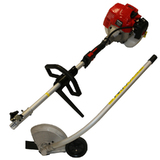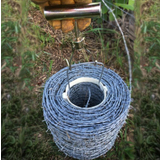Fire can spread in minutes, destroying homes, businesses, and lives. In Australia, fire services respond to over 4,500 house fires annually, with half starting in the kitchen—often due to unattended cooking. Electrical faults cause nearly 40% of home fires, making prevention critical.
The good news? Most fires can be prevented. By following fire safety rules and prevention strategies, you can protect your home and workplace. This guide covers:
- Common fire hazards and how to eliminate them.
- Safe practices for cooking, electrical use, and heating.
- Essential fire safety equipment and emergency planning.
Fire safety isn’t just about response—it’s about prevention. Let’s explore the steps to keep your property and loved ones safe.
Fire Prevention Strategies Suitable For Australia
1. Creating a Defendable Space Around Your Property
A defendable space is an area around your home or business that helps slow down a fire and increases the chances of firefighters saving the structure. In rural and bushfire-prone areas, a properly maintained space can mean the difference between survival and total destruction.

How to Create Defendable Space Around Your Property:
- Maintain a Clear Zone Around the Building
- Remove dry leaves, branches, and debris from gutters, roofs, and around structures.
- Keep grass mowed to below 10 cm to reduce fuel loads.
- Trim overhanging trees and branches that could catch fire and spread flames to the house.
- Install Fire-Rated Doors & Walls
- Replace hollow-core doors with solid-core or fire-rated doors that slow fire spread.
- Install fire-rated plasterboard (Type X Gypsum board) on walls for extra protection.
- Seal all gaps and openings with fire-resistant caulk to prevent ember intrusion.
- Use Fire-Resistant Home Materials
- Choose fire-resistant curtains and upholstery—look for materials with AS/NZS 1530.2 fire rating.
- Replace carpets in high-risk areas with ceramic tiles or fire-resistant flooring.
- Apply intumescent paint on wood and metal to create a fire-resistant barrier.
- Kitchen Fireproofing (Biggest Home Fire Risk Area!)
- Install a stovetop fire suppression device that automatically deploys when flames exceed a safe level.
- Use a fire-rated rangehood filter to prevent grease buildup, reducing fire risk.
- Place a fire blanket within arm’s reach of the stove for quick response to oil or grease fires.
- Keep oven and stove clean—grease and food residue can ignite easily.
- Upgrade Electrical Systems (40% of House Fires Start Here!)
- Replace old circuit breakers with arc fault circuit interrupters (AFCIs) to prevent electrical fires.
- Install smart power boards that cut power if an overload or short circuit is detected.
- Avoid piggybacking multiple plugs into one outlet—this overloads the system.
- Get professional electrical inspections every 5 years (or yearly for older homes).
- Secure Heating Appliances & Fireplaces
- Keep a minimum of 1-meter clearance around heaters and fireplaces.
- Install a heat-resistant hearth under and around the fireplace to prevent floor ignitions.
- Use metal mesh screens in front of open fireplaces to prevent embers from escaping.
- Never leave portable heaters unattended or running overnight.
2. Home & Farm Fire Safety Measures
Fires often start inside homes, so it’s crucial to fireproof your house and outbuildings.
- Install Smoke Alarms in Key Areas
- Place smoke alarms in bedrooms, hallways, and living areas.
- Test alarms monthly and replace batteries at least once a year.
- Opt for interconnected smoke alarms so when one sounds, all alarms trigger.
- Keep Fire Extinguishers in Accessible Locations
- Install fire extinguishers in the kitchen, sheds, and near machinery.
- Choose multi-purpose dry chemical extinguishers suitable for electrical, oil, and solid fuel fires.
- Learn how to use an extinguisher properly using the PASS method: Pull, Aim, Squeeze, Sweep.
- Seal Gaps in Roofs, Doors, and Vents
- Use ember-resistant vents or fine mesh screens to prevent embers from entering buildings.
- Apply weather stripping around doors and windows to block ember intrusion.
- Ensure Hoses Are Long Enough to Reach All Buildings
- Use durable fire-resistant hoses and store them in easily accessible locations.
- Have backup water sources such as rainwater tanks or dedicated firefighting water supplies.
- Set Up a Firefighting Water Supply
- Install a dam, tank, or pool with a high-pressure pump to serve as an emergency water source.
- Ensure all residents or workers know how to operate the pump and hoses.
3. Machinery & Equipment Fire Safety
Machinery and tools are essential for land management, but they can also start fires if not used safely.
- Check Fuel Lines and Clean Engines Regularly
- Inspect fuel lines for leaks and wear before starting any machinery.
- Clear engines of dust, grass, and debris that can catch fire.
- Keep exhaust systems in good working order to reduce overheating risks.
- Avoid Using Machinery on High-Risk Fire Days
- Postpone non-essential activities requiring machinery during Total Fire Ban days.
- If work is necessary, have fire suppression tools on hand, such as water tanks and extinguishers.
- Monitor the weather and be aware of Fire Danger Ratings before operating machinery.
- Keep Fire Extinguishers in Tractors, Utes, and Sheds
- Store easily accessible fire extinguishers in vehicles and work areas.
- Regularly check extinguisher pressure gauges and replace expired units.
- Use Spark Arrestors on Chainsaws and Grinders
- Install spark arrestors on all combustion-powered tools to reduce the risk of sparks igniting dry grass.
- Use cutting and grinding equipment in cleared, non-flammable areas to reduce fire risk.
- Wet down work areas before using high-heat machinery to minimize ignition potential.
Resources: CFS Guide to Property Protection
2. Home & Farm Fire Safety Measures
Fires often start inside homes, so it’s crucial to fireproof your house and outbuildings.
- Install smoke alarms in key areas and test them regularly.
- Keep fire extinguishers in the kitchen, sheds, and near machinery.
- Seal gaps in roofs, doors, and vents to prevent ember attacks.
- Ensure hoses are long enough to reach all buildings.
- Set up a firefighting water supply, such as a dam, tank, or pool with a pump.
Resources: Home Fire Safety Tips
3. Machinery & Equipment Fire Safety
Machinery and tools are essential for land management, but they can also start fires if not used safely.
- Check fuel lines and clean engines regularly to prevent overheating.
- Avoid using machinery on high-risk fire days.
- Keep fire extinguishers in tractors, utes, and sheds.
- Use spark arrestors on chainsaws and grinders.
Resources: CFS Farm Fire Safety
Emergency Preparedness: What to Do If a Fire Starts
1. Fire Action Plan
A well-planned response can mean the difference between safety and disaster. Ensure that everyone on your property knows:
- Evacuation routes and meeting points.
- How to shut off gas, power, and water.
- Emergency contacts, including 000 and local fire services.
Resources: Bushfire Survival Plan
2. Firefighting Equipment Every Landowner Needs
Having the right gear can help you control small fires before they spread.
- High-pressure fire pumps – Critical for defending properties in bushfire zones.
- Durable fire hoses – Long enough to reach key areas.
- Fire extinguishers – At least one in each building and vehicle.
- Protective gear – Fire-resistant clothing, gloves, and goggles.
Common Fire Hazards on Australian Properties & How to Prevent Them
Fires can ignite and spread rapidly due to various hazards, many of which can be prevented with proper awareness and precautionary measures. Below are the most common fire risks in Australian properties, along with actionable strategies to reduce them.
Bushfires: Preventing Wildfire Ignition and Spread
Australia’s dry climate, high temperatures, and strong winds make bushfires a serious risk, particularly in rural and bush-adjacent areas. Fires can be ignited by lightning, discarded cigarettes, campfires, and farm machinery, spreading rapidly if conditions are favorable.
How to Prevent:
- Maintain a 30m defendable space around homes by removing dry vegetation, fallen branches, and flammable debris.
- Trim overhanging branches and plant fire-resistant species such as lilly pilly and bottlebrush instead of highly flammable eucalyptus or pine.
- Install fire-resistant building materials, including ember-proof mesh on vents, metal gutter guards, and bushfire-resistant shutters.
- Regularly check weather and fire danger ratings, avoiding activities that could spark fires on high-risk days.
- Establish a firebreak by clearing a 3m-wide strip of land around the property to slow fire spread.
Household Fires: Reducing Indoor Fire Hazards
House fires are often caused by unattended cooking, faulty electrical wiring, overloaded power outlets, and flammable heating appliances. The kitchen is the highest-risk area, with grease fires being a common cause of house fires in Australia.
How to Prevent:
- Never leave cooking unattended, especially when frying with oil or using gas stoves.
- Keep a fire blanket and Class F fire extinguisher within reach in the kitchen.
- Regularly inspect wiring, power outlets, and appliances for damage or overheating.
- Avoid overloading power boards and unplug appliances when not in use.
- Use heaters and electric blankets with automatic shut-off functions and keep flammable objects away from heat sources.
Machinery and Equipment Fires: Preventing Sparks and Overheating
Farm equipment, chainsaws, and power tools generate heat and sparks, which can ignite nearby dry grass, hay, or stored fuels. Agricultural and industrial fires often occur due to poor maintenance, mechanical failures, or improper fuel handling.
How to Prevent:
- Regularly clean and maintain engines, fuel lines, and exhaust systems to prevent overheating.
- Equip tractors, chainsaws, and grinders with spark arrestors to reduce ignition risk.
- Avoid using metal-blade tools on high-risk fire days as they can create sparks when striking rocks.
- Keep fire extinguishers in all vehicles, sheds, and machinery areas for quick response.
Storage of Flammable Materials: Handling Fuels, Hay, and Chemicals Safely
Improper storage of fuels, chemicals, and flammable materials significantly increases fire risk. In farms and industrial settings, hay can also self-combust if stored incorrectly.
How to Prevent:
- Store fuel, gas bottles, and chemicals in well-ventilated, fireproof storage areas, away from buildings and heat sources.
- Keep hay bales dry and well-aerated to prevent spontaneous combustion.
- Follow hazardous materials storage regulations, ensuring that chemicals are properly labeled and stored in fire-rated cabinets.
- Install fire suppression systems in storage areas for added safety.
Fire Danger Ratings and Alerts
Fire conditions change daily, and being aware of fire danger ratings helps in planning activities and preventing fire risks. Before fire season begins, it is essential to monitor fire danger alerts from official sources.
Where to Check Fire Danger Ratings:
- Fire Danger Ratings – Provides real-time assessments of fire risk based on weather conditions and fuel loads.
- Fires Near Me – Tracks active fires and official warnings from emergency services.
- Bureau of Meteorology – Updates on weather patterns that influence fire risks, such as heatwaves and strong winds.
Setting up real-time fire notifications on mobile devices ensures immediate updates on nearby fire risks, helping property owners take preventive action before conditions become dangerous.
By addressing these common fire hazards and implementing preventative strategies, the risk of fire damage can be significantly reduced. Fire prevention should be an ongoing effort, not just a seasonal consideration, to ensure long-term safety for homes, businesses, and agricultural properties.
Final Thoughts: Be Prepared, Stay Safe
Fire prevention is a continuous effort, not just something to think about during bushfire season. By taking action now, you can protect your home, farm, and community.
Key Takeaways:
- Keep grass low, remove flammable debris, and clear vegetation.
- Regularly test smoke alarms, check fire extinguishers, and maintain ember-proofing.
- Monitor fire danger ratings and have an emergency plan in place.
- Invest in firefighting equipment for quick response.
Don’t wait for a fire—start protecting your property today!
Related Blogs:
















